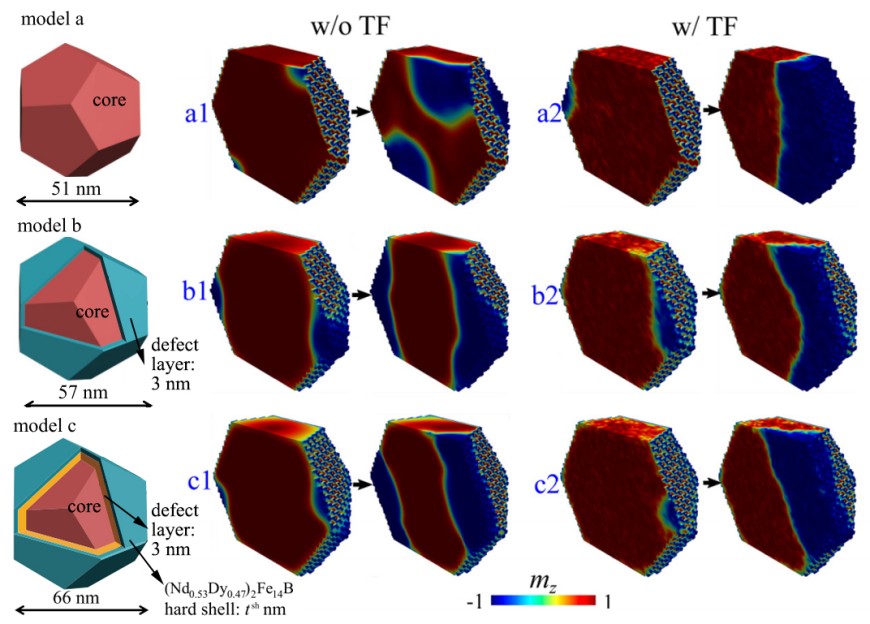Multiscale simulations toward calculating coercivity of Nd-Fe-B permanent magnets at high temperatures
New Publication in “Physical Review Materials”
2019/08/10

Authors: Qihua Gong, Min Yi, and Bai-Xiang Xu
A computational scheme integrating the atomistic spin model (ASM) and micromagnetic simulations is proposed to predict the coercivity of Nd-Fe-B permanent magnets at high temperatures. ASM simulations are applied to calculate the temperature-dependent intrinsic parameters of Nd2Fe14B, including the saturated magnetization, magnetocrystalline anisotropy, and exchange stiffness, which are shown to agree well with the experimental values. With the ASM results as input, finite-temperature micromagnetic simulations based on the stochastic Landau-Lifshitz-Gilbert equation are performed to calculate the magnetic reversal and coercivity (Hc) at high temperatures. It is found that in addition to the decrease of anisotropy field with temperature, thermal fluctuations further reduce Hc by 5–10% and β (temperature coefficient of coercivity) by 0.02–0.1% K−1 in the presence of a defect layer. The computed thermal-activation volume, which increases with temperature, is shown to be enhanced by several times due to the defect layer with strong magnetization (e.g., 1 T), but can be decreased by introducing a hard shell. Both Hc and β can be enhanced by adding the Dy-rich shell, but saturate at a shell thickness (t sh) around 6–8 nm after which further increasing t sh or adding Dy into the core is not essential.



